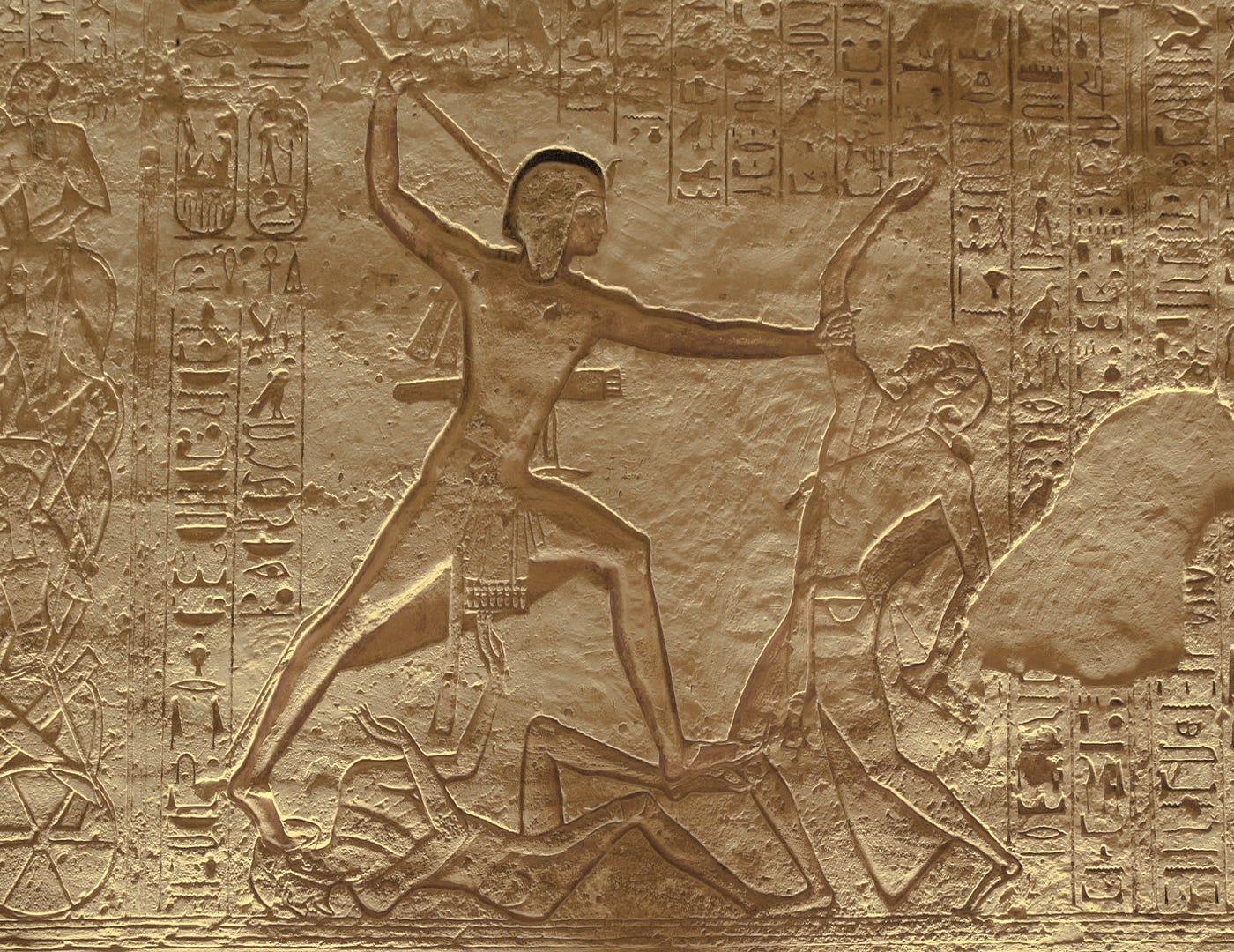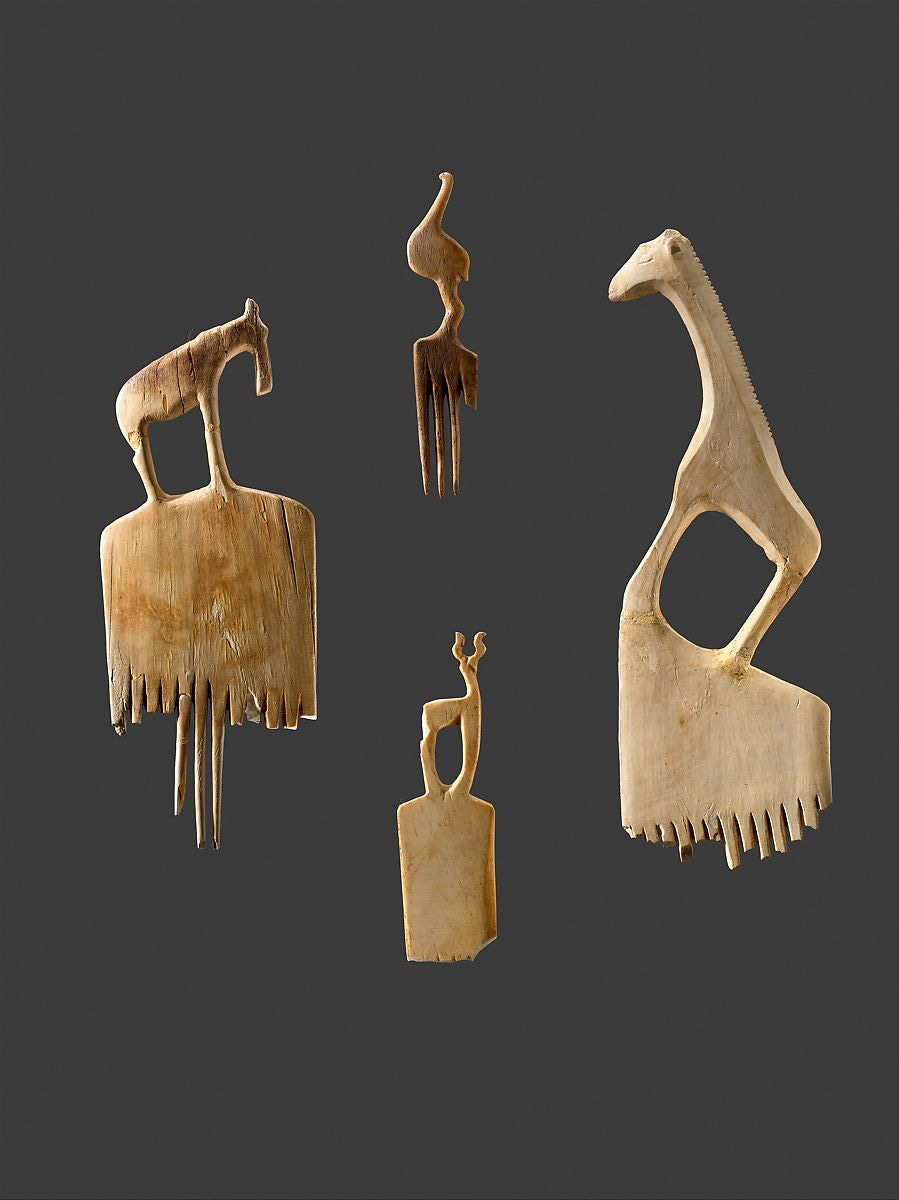When we think of ancient Egypt, pyramids and pharaohs are probably the first thing to come to mind. Maybe we instead imagine the descent into Tutankhamun’s treasure-filled tomb, or a mummified body, still wrapped in layers of linen bandages inside its sarcophagus. The Nile gives life to the desert, flooding every year (at least until the construction of the dams in the 20th century) and providing its fertile silts to one of the most productive agricultural regions in the world.
All of these things share a certain unchanging quality: eternal monuments standing watch over the desert, bodies preserved unmarred over the millennia, tombs undiscovered and untouched by the ravages of time, kings following kings in an unbroken succession back into the mists of time.
The ancient Egyptians themselves certainly felt this way, and it’s hard not to agree with them. Cleopatra lived closer in time to us than she did to the construction of the Great Pyramid at Giza. The last pharaoh of the New Kingdom, Rameses XI, was about as distant from the first pharaoh (Narmer) as we are from the first Roman emperor, Augustus. That’s not to say that nothing ever changed - very much the opposite - but that there were key continuities in everything from religious beliefs to the treatment of the body after death to the imagery of royal power. If Rameses XI had gone two thousand years back in time, there would have been things he recognized in the reign of his distant predecessor. Consider the smiting scene, in which the pharaoh righteously bashed a foreigner over the head with a mace: It was a common image from the very beginning all the way to the end. Here’s one from the First Dynast, around 3000 BC:
Compare that to this one, from the Nineteenth Dynasty, around 1700 years later:
Not too different!
For that reason, it’s not easy to picture the beginnings of ancient Egypt, a time before pyramids and pharaohs and mummies. Yet this time did exist; people did occupy the Nile Delta and the Nile Valley before the rise of the Egyptian kings or what we understand to be Egyptian civilization.
Those earlier inhabitants of what later became Egypt left important legacies to their descendants. Their religious beliefs, their ideas about the body, and especially the importance of death and burial all grew out of things that had a long past in the Nile Valley. So how should we understand that past?
In Mesopotamia, civilization - the complex of cities, the state, and the written word - grew out of a long, slow transformation. Villages were built on the same spots over and over again, producing those distinctive tells (mounds) dotting the landscape from layer after layer of crumbled occupation. Permanent settlements made up of houses, surrounded by fields of grain, were the cornerstone of Mesopotamian civilization. Everything else, from cities to temples to kings, was built on that foundation.
Not so in Egypt, so far as we can tell (though scholars argue about this). Until roughly 3800 BC, only a few centuries before the first kings emerged along the Nile, the people of the Nile Valley didn’t have permanent settlements. They weren’t primarily farmers, if they did any cultivation at all. Instead, they were herders, mobile pastoralists who moved from place to place with their herds of cattle. People along the Nile did eventually take up farming, and they did build villages, but not until quite late. If this argument is correct, and I think it has a lot to recommend it, then Egyptian civilization was the product of a rapid, explosive transformation from herding to farming to full-blown states with kings and bureaucracies. This took just a few hundred years, rather than the thousands that passed in Mesopotamia between villages and the heights of cities like Uruk.
A society of mobile herders, what the archaeologist David Wengrow calls the “primary pastoral community,” has much different values and mores than a society of sedentary farmers. This showed up in two particularly visible and significant ways, both of which continued into the Dynastic periods of Egyptian history we’re more familiar with.
First, the body. If you’re a herder and you’re moving from campsite to campsite, you can’t use your village or your house to make statements about who you are; instead, you have to come up with different ways of expressing your identity. The fashion in which you style your hair, the ornaments and jewelry you choose to wear, the use of body paint and tattooing: these are all ways of using the body as a medium for showing who you are as an individual and who your people are. Just as important, they’re ways of showing who you aren’t.
In the deep Egyptian past, the body was the primary site of identity formation. That’s a complicated way of saying that people showed who they were with the ornaments, items, and fashions they carried on their body. Take these combs as an example:
Combs matter a great deal if your hair is a way of showing who you are and who you belong with. This emphasis on the body continued all the way up into the historical period. Beliefs about it, and why it mattered so much, were tied into the eventual development of mummification and all the beliefs that went along with that.
The second key holdover from this earlier period was the importance of burials and funerary monuments. If you’re a herder who moves from pasture to pasture, your home isn’t permanent, but your burial place is. Cemeteries, rather than settlements, were the permanent features on the landscape of the Nile Valley in this period. Cities of the dead came long before cities of the living, and the Egyptians never forgot the emphasis they placed on where and how the dead were treated. Intentional mummification, for example, might have begun as early as 3600 BC, four or five centuries before kings succeeded in uniting Egypt.
These things weren’t unique to what later became Egypt, though. They were just general characteristics of cultures in the Nile Valley, extending from the fringes of the Nile Delta in the north far into present-day Sudan in the south. The people of the Delta, wha later became known as Lower Egypt, had a far different lifestyle. There was no such thing as “Egypt,” even if some aspects of this earlier culture embedded themselves in what became characteristically Egyptian.
So these were the foundations of ancient Egyptian society, and they predated even the earliest kings. Yet kings did eventually rise, and so too did the pyramids. That’s a story for later.
If you think this stuff is cool, check out today’s episode of Tides of History. I cover Egypt before the pharaohs in much greater detail.
I wrote a book! It's called The Verge: Reformation, Renaissance, and Forty Years that Shook the World. The book comes out in July, but you can pre-order it here.








Hey Mr Wyman! First time commenter, who discovered your podcast around Thanksgiving. I just wanted to say “thank you” to you and the team for putting it together and to say that it’s an absolutely top tier podcast.
Your story telling, and accompanying blog to do follow ups, are absolutely amazing; especially the intros. I follow along on my mind thanks to that.
I hope your week is going great. I just wanted to chime in to give you and your team y’all’s roses while y’all can smell them. Take care and thank you again! Listening to past episodes as I type this 🤙🏾 Respect, all the way from the Carolinas
Fascinating article-thanks!!! 👍